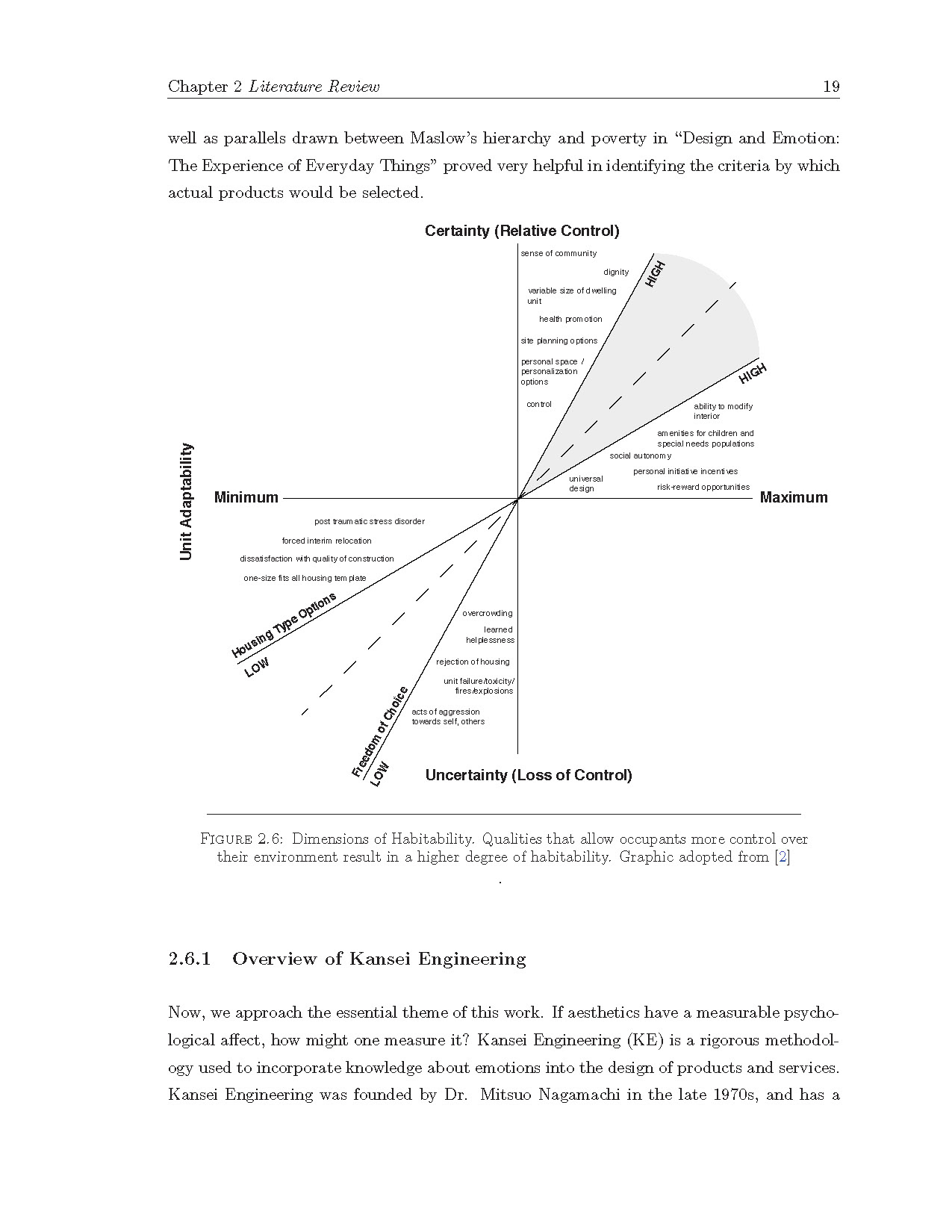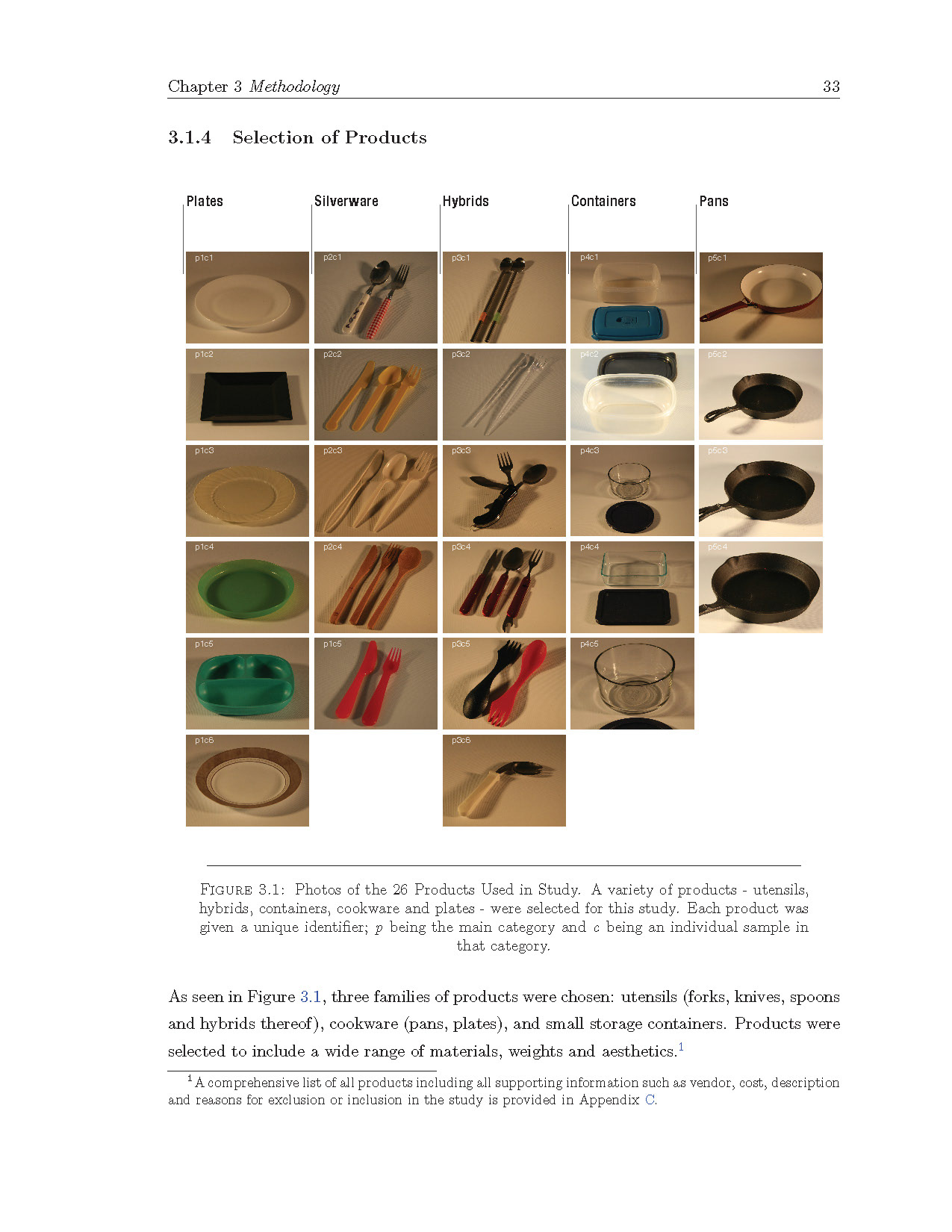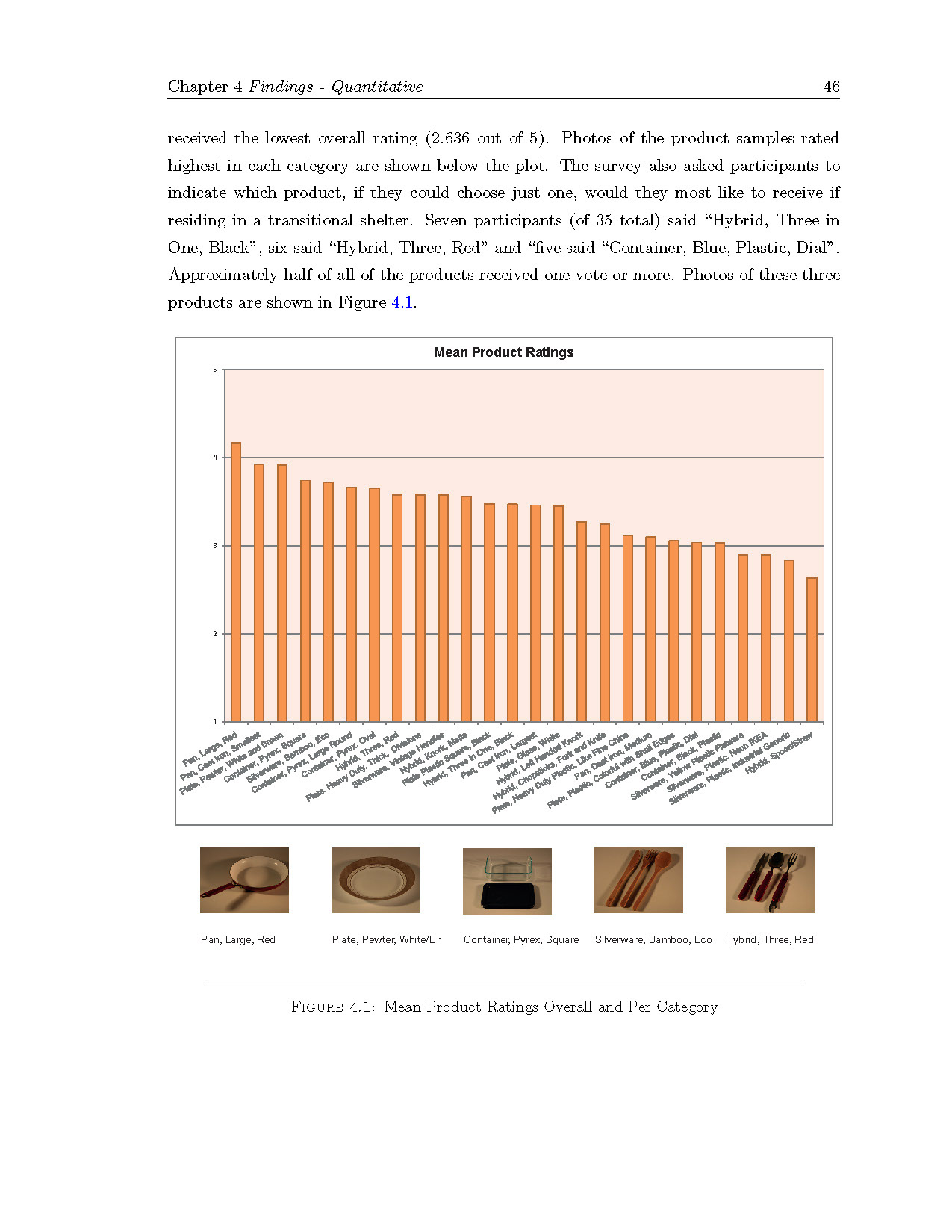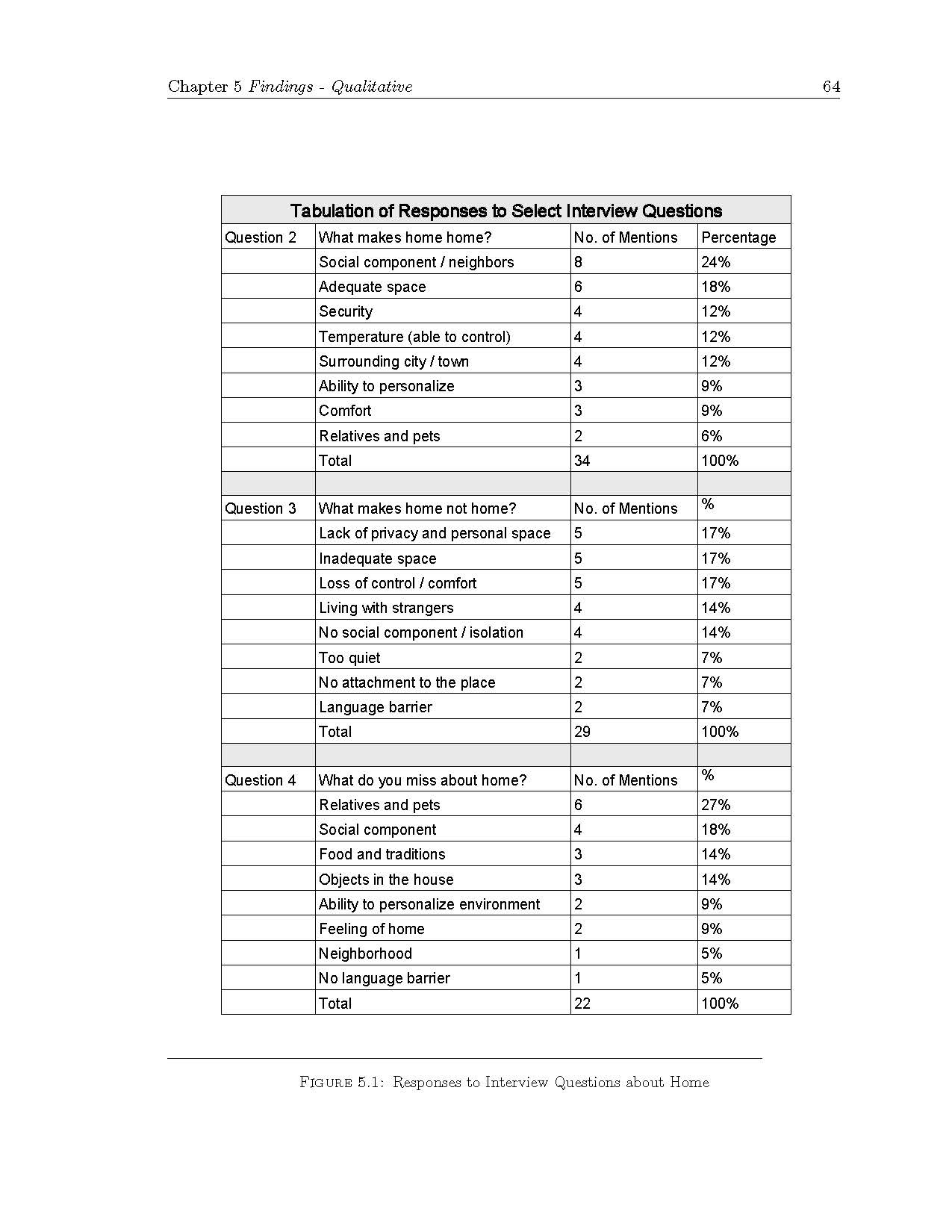
Literature Review: Dimensions of Habitability

Literature Review: Kansei Engineering

Literature Review: Quantifying Emotions

Methodology: Selecting Kitchen Products

Findings: Quantitative

Exploring the Application of the Kansei Engineering Methodology for Evaluating Kitchen Products for Use in Post-Disaster Transitional Shelters Providing adequate shelter is one of the most pivotal challenges after a natural disaster. Shelter designs incorporating economic and functional aesthetic capabilities aid users in experiencing a more holistic post-disaster recovery. This project gives attention to the interior conditions – the kitchen area, in particular – of transitional natural disaster housing. Kitchen products that might contribute to a shelter’s habitability and its occupants’ sense of dignity by suggesting and embodying permanence are chosen. Participants who have had experience with poverty, frequent relocation or disasters are interviewed and asked to rate a variety of kitchen products. These qualitative and quantitative data are analyzed using a mixed-methods approach inspired by Kansei Engineering. Outcomes suggesting implications for future research are outlined with commentary on how attempts to address product design aesthetics, economics, and self-actualization might transform the design of transitional shelters used after disasters. The implications of this work for policy and research are useful to governmental and emergency management agencies seeking to integrate progressive, inclusive shelter design into their operations. Manuscript designed and written with LaTeX. I presented this work at the 10th National Conference on Earthquake Engineering in July 2014.





